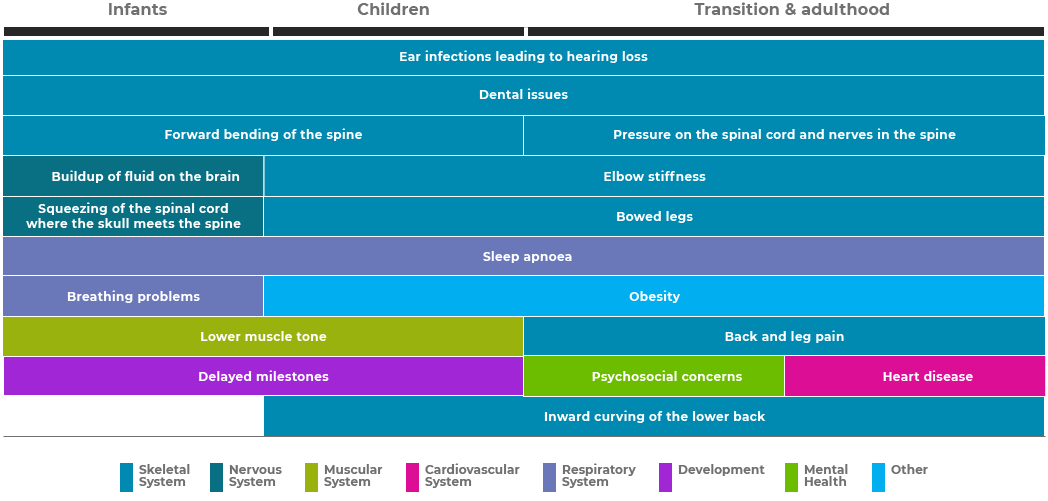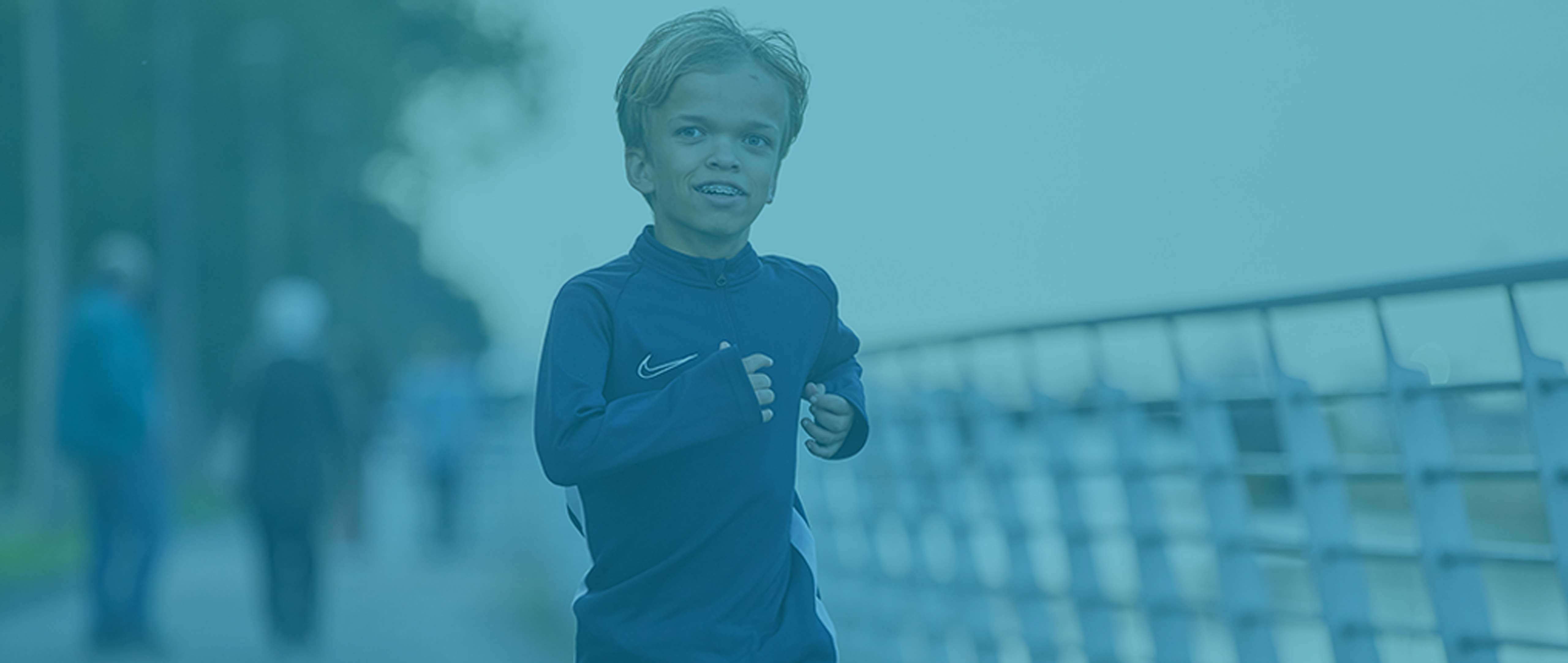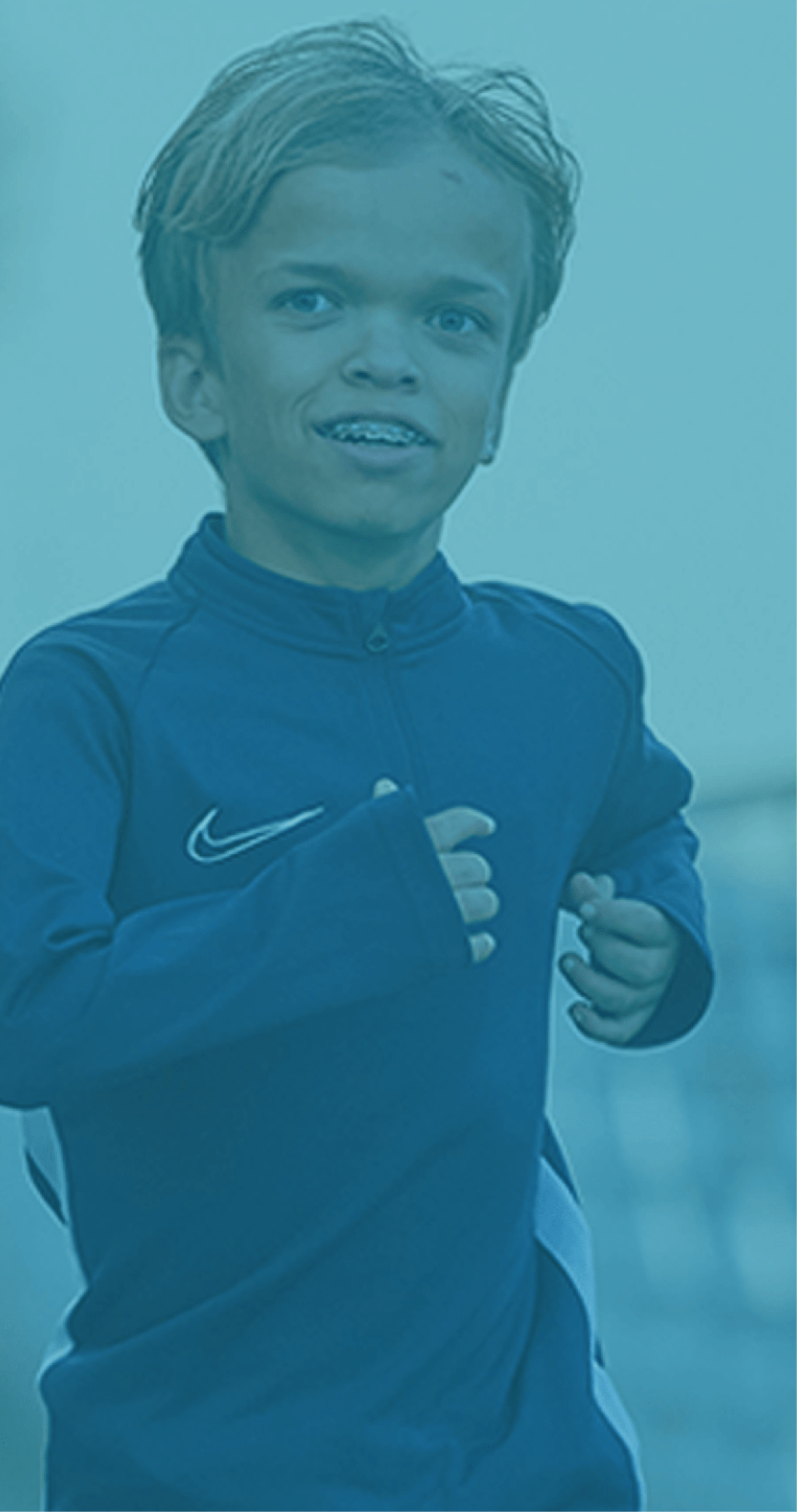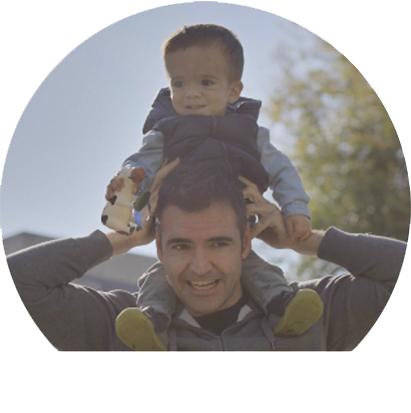Through school, university, work and beyond, people with achondroplasia can lead healthy, active lives. At the same time, because of the way their bones grow, physical complications can occur and progess over time. But if you know what to expect, you can be well prepared for lifelong management of achondroplasia with the help of your care team.
What are the possible complications?
You may notice some complications as early as infancy. Some will get better over time. You should watch out for them, but not all of them may need immediate care. Others may not go away on their own and may require medical intervention, even surgeries. It’s important to talk with your doctor to understand when medical care might be needed.
It’s important to know that while achondroplasia may cause physical challenges, your child’s cognitive development is not affected.
Here are some of the more common complications that people with achondroplasia may experience throughout their lives:
-
Ear infections affect ~68% of children – and frequent ear infections can sometimes lead to hearing loss1
-
Dental issues, like misaligned teeth, a narrow palate, open bite or underbite2
-
Kyphosis, a forward bending of the spine – most infants will develop this complication, but it usually corrects itself as they grow2
-
Elbow stiffness, which often limits their ability to fully straighten their arms2
-
Bowed legs, which can affect walking and running, and may need surgery to manage2
-
Sleep apnoea is a disorder where breathing repeatedly stops and starts during sleep; it affects ~50% of people with achondroplasia3
-
Obesity, high blood pressure, heart disease2
-
Back and leg pain2

References: 1. Collins WO, Choi SS. Arch Otolaryngol Head Neck Surg 2007;133(3):237-44. 2. Pauli RM. Orphanet J Rare Dis 2019;14:1. 3. Afsharpaiman S et al. Sleep Breath 2011;15(4):755–61.
Infancy is an exciting time for new parents. It’s also an important time to watch for complications. In the first year of life, an infant with achondroplasia may need extra attention and closer medical supervision. In the early months of infancy, the healthcare team may monitor for neurological and respiratory complications. Your child’s healthcare team will be watching for additional complications.
Hover over the icons to learn more.








References: 1. Pauli RM. Orphanet J Rare Dis 2019;14:1. 2. Ireland PJ et al. J Dev Behav Pediatr 2010;31(1):41–7.
It may take a bit longer, but developmental milestones will happen. Your child will likely achieve them in their own time. Remember, every child’s journey will be at a different pace.
Be sure to ask your doctor about any concerns you have about your child’s development. Remember: achondroplasia does not affect your child’s cognitive development.
Hover over the icons to learn more.






Reference: 1. Pauli RM. Orphanet J Rare Dis 2019;14:1.
Emotions. Peer pressure. The need to fit in. The teenage years are difficult for everyone. But for a teenager with achondroplasia, this time of life can be even harder. Feelings of depression, anxiety and isolation are common, so support is critical during these years.
Remember, your child’s intelligence is not affected by achondroplasia, so it’s important to speak with them at the appropriate level for a teenager.
Hover over the icons to learn more.




Reference: 1. Thompson S et al. Disabil Rehabil 2008;30(1):1–12. 2. Fredwall SO et al. Orphanet J Rare Dis 2020. 25;15(1):123. 3. Pauli RM. Orphanet J Rare Dis 2019;14:1.
As your child becomes an adult, they may outgrow some complications, while others may continue. And new complications may arise that they haven’t experienced before. Mobility and pain can continue to be challenging, affecting work, physical activity, and even daily household responsibilities.
Learning what to expect today can help your child be better prepared to handle these challenges tomorrow.
Hover over the icons to learn more.




References: 1. Fredwall SO et al. Orphanet J Rare Dis 2020. 25;15(1):123. 2. Pauli RM. Orphanet J Rare Dis 2019;14:1.
Family Planning Considerations
It’s also important to remember that achondroplasia is a genetic condition. This means that it can be passed down to children. Speaking with a geneticist can help offer guidance on family planning.

GET TO Know the specialists
Learn about the healthcare specialists who can help manage complications.




FACING DAILY CHALLENGES
Day-to-day activities may be more challenging and require extra help. Daily challenges can include:
“Growing up can be hard, both socially and emotionally. Kids with achondroplasia may have challenges with self-esteem, social pressure and anxiety.




